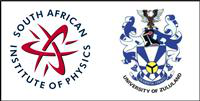Speaker
Level for award<br> (Hons, MSc, <br> PhD)?
MSc
Abstract content <br> (Max 300 words)
The semiconductor materials used to create solar cells reduces the electrical performance of the device. Light beam induced current (LBIC) measurement is a technique that utilises focused light to probe a solar cell device and characterise it with respect to the spatial variation of photo-generated current. By scanning the beam probe across a solar cell while measuring the I-V characteristics at each point, a map of photo-response and various device performance parameters may be extracted.
In this study a high resolution LBIC system was designed and constructed. In order to determine the effect of various parameters on the performance of a solar cell, a device parameter extraction gradient-decent optimization algorithm was created. The algorithm minimizes the area between the light current-voltage (I-V) curve generated from the device under point-illumination and the I-V curve generated using the diode equation. The algorithm thus locates the optimal parameters to the diode equation to yield a best-fit to the experimental data. This paper discusses the optimisation of the design of the LBIC system, the software interfacing of the data acquisition system and parameter extraction algorithm used.
Apply to be<br> considered for a student <br> award (Yes / No)?
Yes
Would you like to <br> submit a short paper <br> for the Conference <br> Proceedings (Yes / No)?
Yes
Main supervisor (name and email)<br>and his / her institution
Prof E.E van Dyk, Ernest.vanDyk@nmmu.ac.za, Nelson Mandela Metropolitan University

